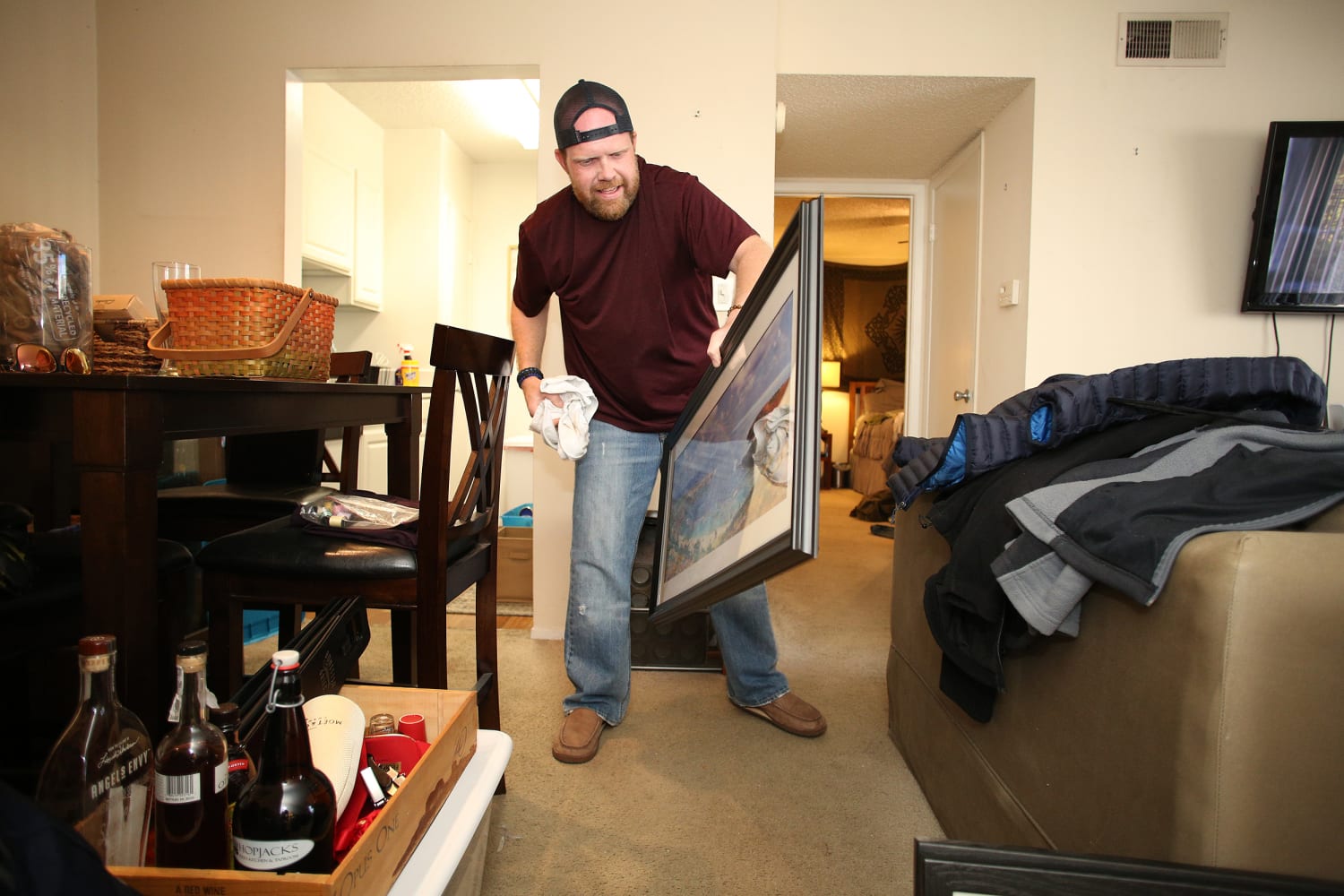At least one federal judge in Georgia has ruled against landlords who argue the CDC ban was unconstitutional. But that hasn’t stopped Kinsey from continuing to evict based on it. On Dec. 1, she ruled against another local renter, using the same rationale.
Kinsey’s clerk said the judge would not comment on the cases, citing court policy.
The CDC’s eviction moratorium was supposed to protect renters in all 50 states through the end of the year. Keeping Covid-affected renters in their apartments, the CDC said, would reduce the potential for virus transmission likely to occur as displaced people were forced to move in with family or friends or into homeless shelters.
But nationwide adherence to the moratorium has been spotty, housing experts say. Some judges, like Kinsey, are rejecting the moratorium outright, while others are evicting based on landlord-friendly state regulations or disputed claims about tenants violating their leases.
Evictions processed while the moratorium is still in place are a preview of what some experts predict will be a wave of homelessness when the CDC moratorium expires on Dec. 31. Access to Congressional funds earmarked for rental assistance also ends then, programs that have helped landlords as well as renters.
“If policymakers don’t intervene, we are facing the very real possibility of tens of millions of people losing their homes this winter,” said Diane Yentel, president and CEO of the National Low Income Housing Coalition, in an email. “The consequences will be catastrophic — for children, families, communities and our country’s ability to contain the pandemic.”
‘They broke a lot of my things’
Apart from the temporary CDC moratorium, the U.S. has no federal eviction policy and each state has different rules for landlords and tenants. In Ohio, for example, landlords can proceed with evictions if a tenant is just one day late with the rent.
Some states have implemented their own eviction bars. But at least seven states — Arkansas, Georgia, Missouri, Ohio, Oklahoma, South Dakota and Wyoming — have never put such protections in place. All are Republican-controlled and most have resisted many Covid measures.
Landlords in an array of states have filed lawsuits challenging the CDC moratorium. One, filed in federal court in the northern district of Ohio, contends that the eviction ban “represents a sweeping assumption of power by an administrative agency that it simply does not possess.” The American Medical Association and the American Academy of Pediatrics filed briefs in support of the CDC’s order and against the landlords. The judge hearing the case is expected to rule soon.
The homeless wave is already starting to build in some places, housing advocates say. Benjamin Home, Advocacy Director for the Legal Aid Society of Columbus, Ohio reported a significant increase in eviction filings in the most recent week in his area — over 500 compared with at most 300 previously.
Bill Faith, executive director of the Coalition on Homelessness and Housing in Ohio, told NBC News in an email that Springfield, a small Ohio city near Dayton, has seen its homeless population explode in recent weeks. “Demand for shelter is now nearly 7 times what it was at the beginning of the pandemic,” Faith said of Springfield.
Amanda Frank, 39, of Wooster, Ohio, near Akron, became homeless in November when a judge ruled against her in an eviction proceeding. For a year, Frank had rented a townhouse from a local contractor and builder, Sommer & Swartzentruber, where she lived with her boyfriend and 17-year-old daughter.
Frank had fallen behind on her rent after her boyfriend was laid off due to Covid, she said. Although she received rental assistance from a local church and ultimately paid her landlord what she owed, the judge hearing her case sided with the landlord, saying she’d been able to pay the rent but had not done so on time.
Working for a house-cleaning company, Frank had become the sole breadwinner and she provided documentation to the court that she’d been affected by Covid as required by the CDC moratorium, she said.
She was given a week to get out and at 3 p.m. on the last day, as she was packing, the landlord’s representatives arrived and started tossing her belongings into the yard.
“They broke a lot of my things by throwing them out the door,” said Frank, who has never been evicted before. “That was the most devastating thing I’ve ever had to go through.”
Frank’s landlord, Gerald Swartzentruber, did not return a phone call and email seeking comment about Frank’s eviction.
Local charitable organizations have helped Frank collect rent money for a new home but every landlord she’s applied to has turned her down because of the eviction on her record, she said. This is the typical experience of renters with evictions in their histories, housing experts said.
For now, Frank and her boyfriend are living in their car. Her daughter has gone to live with Frank’s ex-husband.
$5,400 each in unpaid rent
In falling behind on rent amid the pandemic, Frank is not alone. The portion of tenants owing back rent has roughly tripled during the pandemic, federal census surveys show.
In both 2013 and 2017, the two most recent years for which pre-pandemic data on delinquent rent are available, roughly six percent of renters were unable to pay all or part of their rent, according to the surveys. But the most recent survey tracking the pandemic’s impact on households, released yesterday, identified an estimated 18 percent of households behind on rent payments.
The Federal Reserve Bank of Philadelphia says renter households experiencing job loss because of Covid currently owe an estimated $7.2 billion in unpaid rent, or $5,400 each. Among the hardest hit are female renters and households of color, the report noted.
The bipartisan stimulus package under consideration by Congress would provide $25 billion in emergency rental assistance and extend the CDC moratorium through Jan. 31, 2021.
Those funds would be welcomed as many current rental assistance programs are running out of time and money.
There are more than 518 of these programs, according to the National Low Income Housing Coalition, and of the more than $4.2 billion allotted to them, some $364 million of Coronavirus Relief Funds that were supposed to cover missing rent payments remain unspent. If it is not allocated, that money will be sent back to the U.S. Treasury at the end of the year.
Many programs around the country have been overwhelmed by demand, some lacking the staff to distribute funds quickly enough, the coalition said; others depleted funding within hours of opening. More than 150 programs have closed because demand surpassed available resources.
Source: | This article originally belongs to Nbcnews.com











